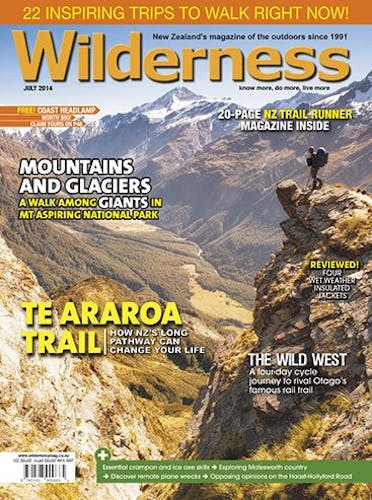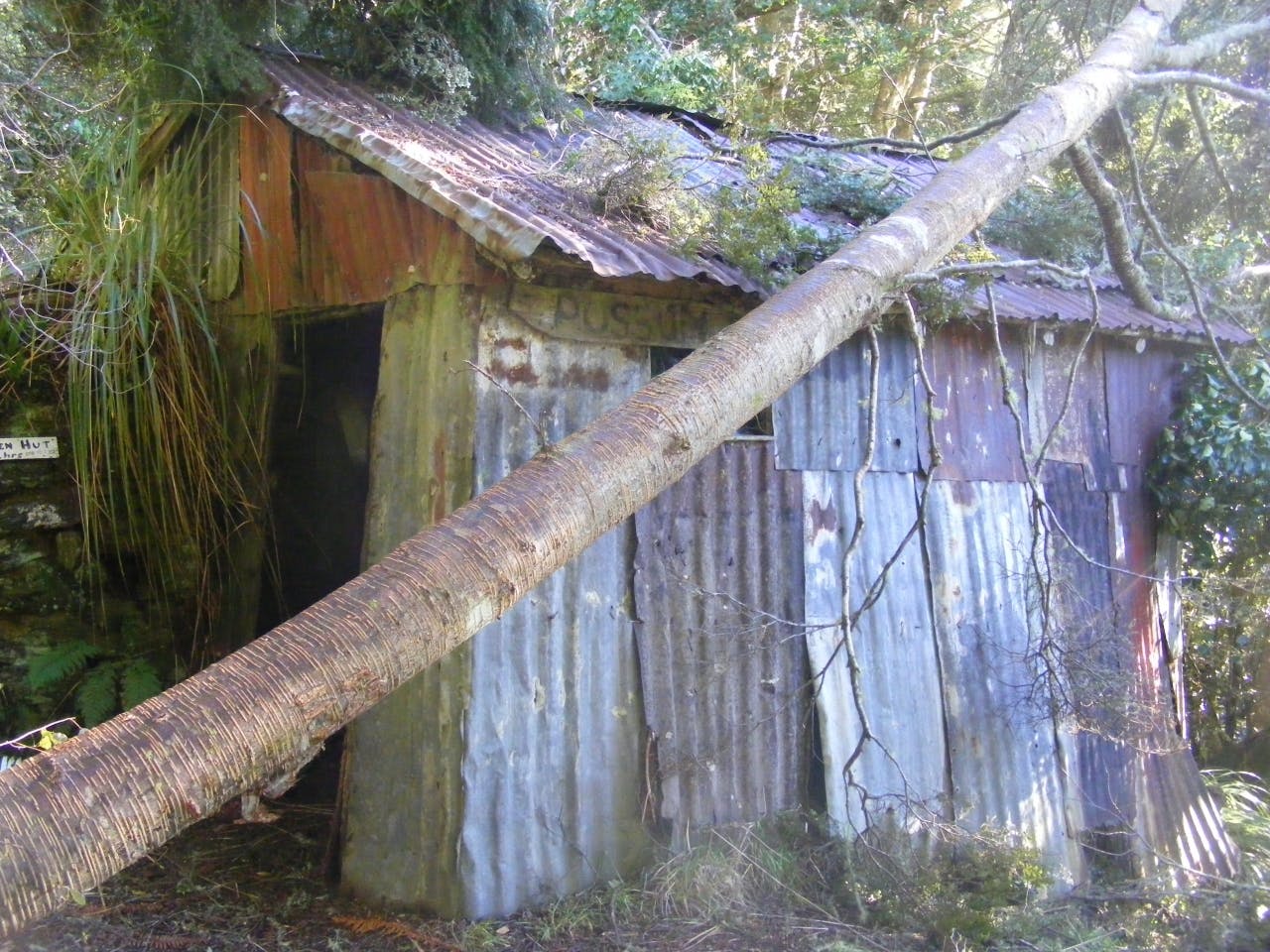- Distance
- 8.83km
- Time
- Car park to Possum Hut via Eucalyptus Spur, 1.5-2hr; Possum Hut to Green Hut site, 45min; Green Hut to car park, 1hr
- Grade
- Easy/Moderate
- Access
- From Mountain Track Road
- Map
- CE17
When people think of heritage sites in the Silver Peaks, they usually think of the early tramping and mustering huts or the ‘caves’ – rock bivvies. Often overlooked is the Depression-era gold-mining history. The most obvious example of that is Possum Hut, tucked in the head of the Waikouaiti River South Branch.
Although there’s a DOC sign on Mountain Track Road indicating access to the hut (often referred to as Hunters’ Access), that route is steep, rough and unappealing. A better option starts 750m to the south, initially following the main marked Silver Peaks route. The track climbs briefly, then skirts the northern slopes of Hightop, where the reward for coming this way is an expansive view of the whole eastern side of the range.
After 20 minutes, and just a couple of minutes past the sign marking the turn-off to Swampy Ridge, an unmarked but obvious track veers off to the right.This is Eucalyptus Spur. It’s usually easily followed as it drops 250m to the nascent river, but when I was there in July last year, the whole area was suffering the effects of snow damage, so progress was slow at times.
At the bottom of the spur, I turned upstream. About 300m before the hut, a huge area of manuka looked like a bomb had hit it and caused a major detour and delay. On arrival at the hut, I found it hadn’t come through unscathed: a large tree was resting on its roof.
The hut, which is of cob construction with iron cladding, had already deteriorated substantially in the 35 years that I’d been visiting it. The bunks have disappeared, presumably up the chimney. So has the unique stained glass window, which comprised four old long-necked Speight’s bottles implanted in the cob, and, latterly, the door.
It seems the hut was built in the 1930s by local farmers Joe Clark and Philip Powell as a base for goldmining at a time when a government subsidy was available. On the approach to the hut, the track is clearly on the line of an old water race.
The exploits of Clark and Powell are commemorated on a stone plaque, installed in a bank a few hundred metres downstream. As well as names and dates, the inscription reads: ‘Our Playground – Gold Possums Pigs’. On a frosty morning in a shady gully, I wondered just how much of a playground it would have been if they were living here in winter. I realised I hadn’t seen the plaque on the way in, so suspected it was in the bombsite windfall. I was keen to get a photo, but twenty minutes clambering under, through and around the fallen manuka yielded no sign of it.
From the hut, the track towards the site of Green Hut, possibly the first tramping club hut in the South Island, climbs steeply through manuka, before turning into a pleasant ridge wander. A homemade sign at Possum Hut suggests a time of two hours but even with fallen trees to negotiate it takes less than half that. After a quick lunch at the Green Hut site, I headed down the familiar Possum Hut Route to complete the loop to the car, with tree falls adding a third to the usual time.
– David Barnes








